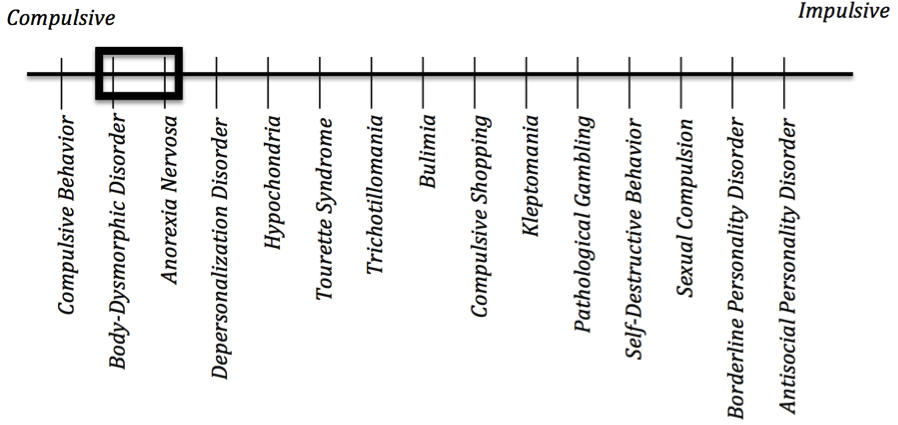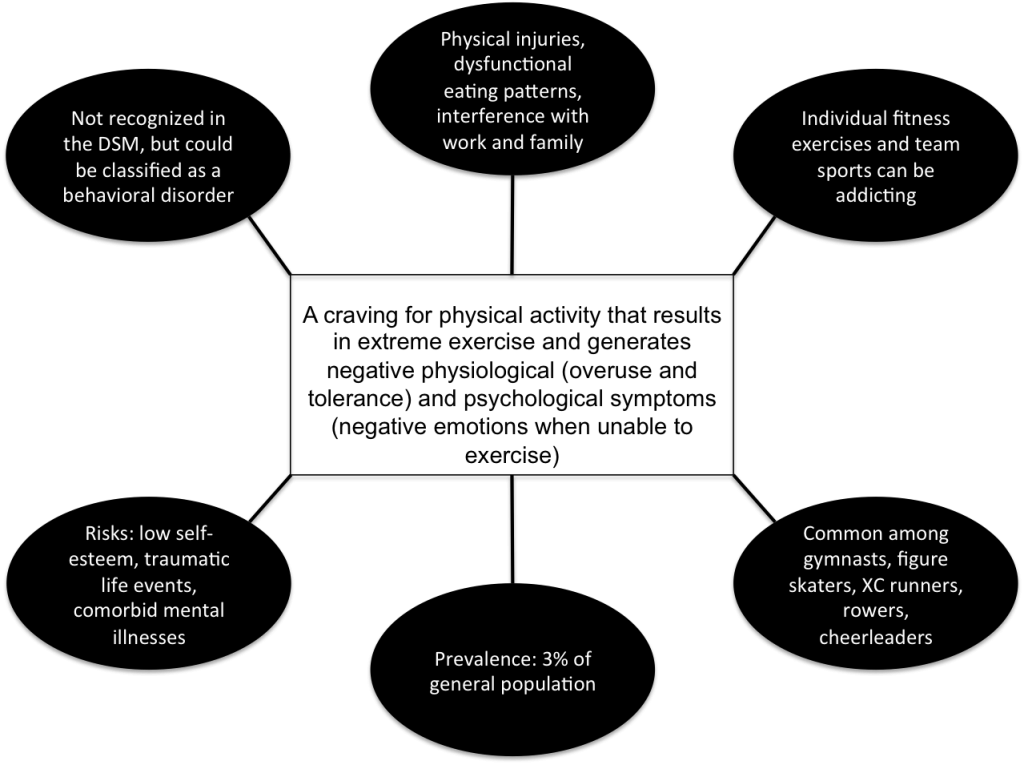Exercise
What Is Exercise Addiction?
What Distinguishes Exercising from Exercise Addiction?
| Salience | The activity becomes the most important thing in a person’s life; daily activities are planned around a rigid exercise regimen |
| Conflicts | Conflicts with friends/family due to the addiction. |
| Mood Modification | Exercise is used to alter mood as a coping strategy to regulate emotions |
| Tolerance | Increasing amounts of exercise are required to achieve the same rush of endorphins |
| Withdrawal | Unpleasant feelings, even depression, occur when exercise is prevented or reduced |
| Loss of Control | Unable to limit the time that is devoted to exercise; cannot properly perform duties at home and/or work |
Symptomology
Obsessive and compulsive symptoms
- Obsessions: there is a preoccupation with exercise when it is prevented or delayed. This creates heightened levels of anxiety, which are then decreased when the exercise is performed.
- Compulsions: relief after the exercise is performed is only temporary. The urge to exercise begins again as anxiety levels rise.
- Compulsive-impulsive spectrum: Exercise addiction falls between Body-Dysmorphic Disorder and Anorexia Nervosa

- Physiological repercussions:
- Decreased testosterone response
- Loss of emotional vigor
- Immunosuppression
- Decreased maximum oxygen uptake
- Decreased blood lactate
- Increased muscle wasting (due to cortisol response)
Co-morbidities: Two types of exercise addiction
Main distinction: Presence of an eating disorder
| Primary Exercise Addiction |
|
| Secondary Exercise Addiction |
|
Case Study: Sarah Hicks




